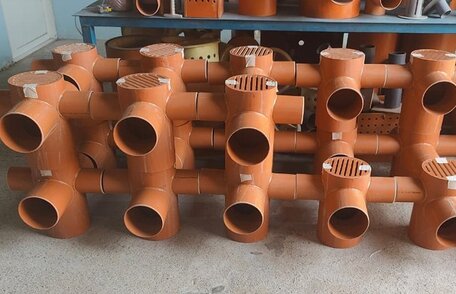If you’ve ever noticed a distinct, unpleasant smell coming from your drains, it’s time to get acquainted with a crucial part of your plumbing system: the gully trap. A gully trap is essential to keep foul odours, gases, and pests from entering your home through your drainage system.
Whether building a new house or upgrading an existing system, understanding what a gully trap is and whether you need one is key to maintaining a clean and safe environment. In this guide, we’ll explore everything you need to know about gully traps and why they are necessary for your plumbing system.
What is a Gully Trap in Plumbing?
A gully trap, often called a gully, is a plumbing fixture that acts as a barrier between your home’s internal drainage system and the main sewer line. It’s typically installed outside your home, near the kitchen, laundry, or bathroom, where wastewater exits the house. The trap consists of a small pit with a water seal that prevents unpleasant sewer gases, smells, and pests from travelling back up through the drains and into your home.
Gully traps are designed to capture backflows of sewer gases while allowing wastewater to flow freely into the sewer system. They play a vital role in keeping the living environment fresh and hygienic.
How Does a Gully Trap Work?
Imagine your gully trap as a sentry at the entrance to your home’s sewer line, standing guard against the invasion of unwanted odours and harmful gases. The trap is designed with a U-shaped pipe that retains a small amount of water. This water acts as a barrier, stopping gases from escaping the sewer and entering your property.
When wastewater from your sinks, showers, or laundry flows into the gully trap, the water in the trap is replaced with new water, continually maintaining the seal. If the trap dries out or becomes blocked, it can no longer perform its function, allowing odours and gases to escape. Regular maintenance and proper installation ensure your gully trap works effectively.

Types of Gully Traps
There are several types of gully traps, each suited to different plumbing needs:
P-Trap Gully: The most common type features a U-bend that holds water to form the seal. It’s ideal for general household use.
Bottle Gully Trap: This trap has a removable chamber that makes it easier to clean. It’s often used where maintenance access is required.
Back Inlet Gully: A specialised gully that allows wastewater from different sources to enter at different heights, often used in areas with multiple plumbing connections.
Overflow Relief Gully (ORG): Designed to provide an overflow point in case of blockages, preventing wastewater from backing up into your home.
Do you need to Install a Gully Trap?
Installing a gully trap is not just a good idea—it’s often a legal requirement in Australian plumbing codes. The gully trap plays an essential role in protecting your home’s air quality by stopping sewer gases from entering living spaces. Here are some reasons why you need a gully trap:
Preventing Odours: Gully traps are essential for keeping foul odours out of your home. Without a functioning trap, sewer gases can escape into your living spaces, creating an unpleasant and unhealthy environment.
Protecting Against Backflow: In the event of a sewer blockage, a gully trap provides an overflow point, directing wastewater away from your home instead of allowing it to back up through your drains.
Keeping Pests Out: Gully traps prevent rodents and insects from entering your home through the sewer line, adding an extra layer of protection to your plumbing system.
Compliance with Building Codes: Plumbing regulations often require gully traps in Australia to ensure the safe and hygienic operation of household drains. Failing to install one could lead to non-compliance issues and potential fines.
How to Maintain Your Gully Trap
Maintaining your gully trap is crucial for it to function effectively. Here are some tips to keep your gully trap in top shape:
Regular Cleaning: Remove leaves, debris, and dirt that can accumulate in the gully, especially after heavy rain. A blocked gully trap won’t function properly and can cause backflow issues.
Check the water Level: Ensure there’s always water in the trap. If the water evaporates, the seal is broken, allowing odours and gases to escape.
Inspect for Blockages: Use a hose to flush the gully regularly to ensure the flow is unrestricted. If you notice slow drainage, it might be time to clear the trap.
Call a Professional: If you’re unsure about the condition of your gully trap, it’s best to consult a professional plumber. The experts at Ezy-Plumb can assess, clean, or replace your gully trap to keep your plumbing system in perfect working order.
Conclusion
A gully trap is essential to any plumbing system. It provides a crucial barrier that keeps unpleasant odours, gases, and pests out of your home. Understanding its function and the importance of regular maintenance can help you keep your home safe, fresh, and compliant with Australian plumbing standards. If you need assistance with installing, inspecting, or maintaining a gully trap, the team at Ezy-Plumb is here to help with expert advice and professional service.
